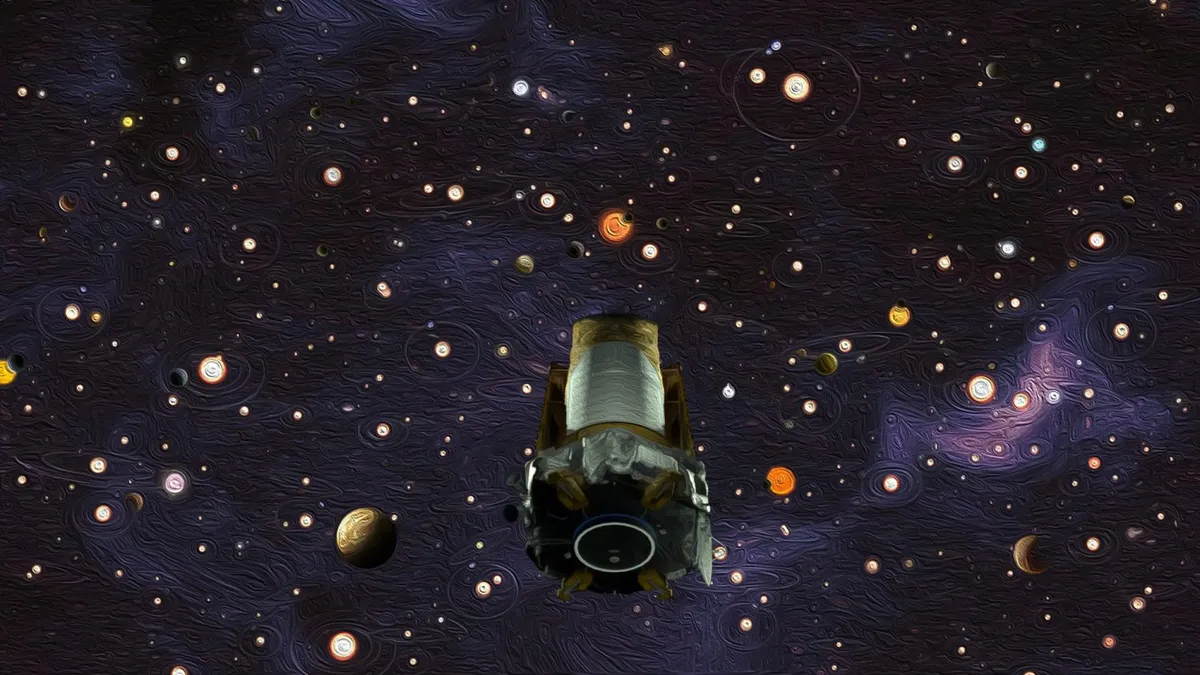A distant star and its planet have been discovered that bear a close resemblance to our own Sun and Earth. The Kepler-160 system system was found in data from the exoplanet-hunting Kepler Space Telescope, which looked for dips in brightness caused by planets transiting across their stars’ discs.
This photometric transit method favours the detection of Earth-sized planets around dim, red dwarf stars rather than around those like our Sun.
Red dwarfs are relatively cool, however, and emit high-energy solar flares: characteristics that could render such planets more hostile to life.
Read more about the Kepler Space Telescope:
- Interview: planet-hunting with Kepler
- A history of the Kepler Space Telescope
- How the Kepler Space Telescope came to be
But Kepler-160, the host star of this newly discovered exoplanet, is only slightly larger than our Sun and has a temperature of 5,200˚C: only 300˚C cooler.
Astronomers already knew the star had two Neptune-sized exoplanets orbiting it from an initial analysis of the Kepler data, but there were fluctuations in their timing that suggested another might be present.
A team from the Max Planck Institute for Solar System Research (MPS) went back over the data using a new technique to tease out the subtle signs of two smaller exoplanets moving around the star.

"Our analysis suggests that Kepler-160 is orbited by a total of 4 exoplanets and not by 2," says René Heller from MPS, who led the team.
One of the 2 new stars could only be detected indirectly, but the other, KOI-456.04, is 1.9 times the radius of Earth and orbits its star once every 378 days – just 13 days longer than an Earth year.
"Our improvement is important in the search for small, Earth-sized exoplanets," says Heller. "The planetary signal is so faint that it’s almost hidden in the noise of the data."
Its Sun-like host star means the light falling on the planet will be very similar to our own sunshine, rather than the infrared-laden light of a red dwarf.
"KOI-456.04 is relatively large compared to many other planets that are considered potentially habitable. However, it’s the combination of its size, at less than double that of Earth, and its solar-type host star that makes it so special and familiar," says Heller.
Read more about this story on the Max Planck website. For more on habitability, read our guide What makes a planet habitable?
Ezzy Pearson is BBC Sky at Night Magazine's News Editor.
